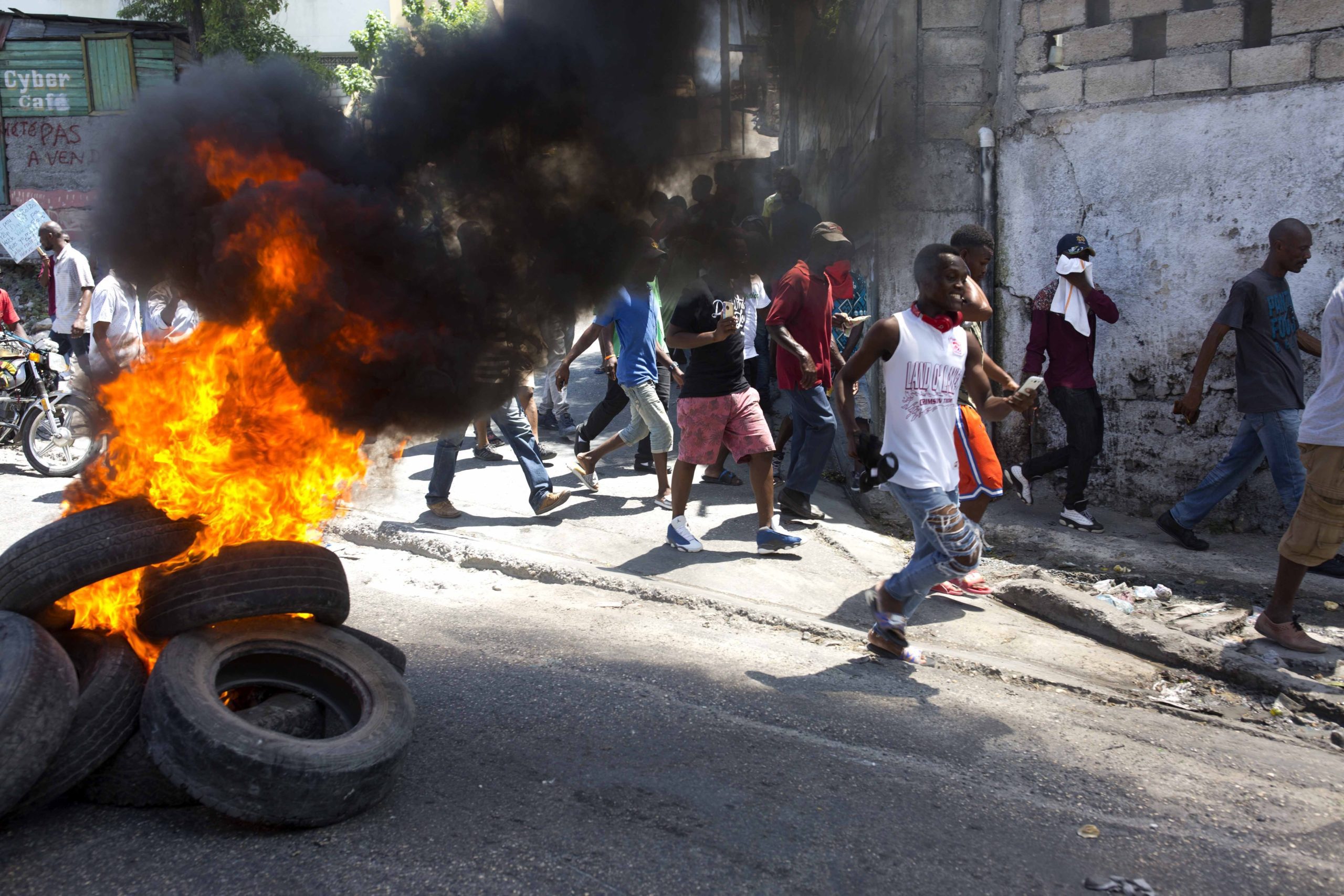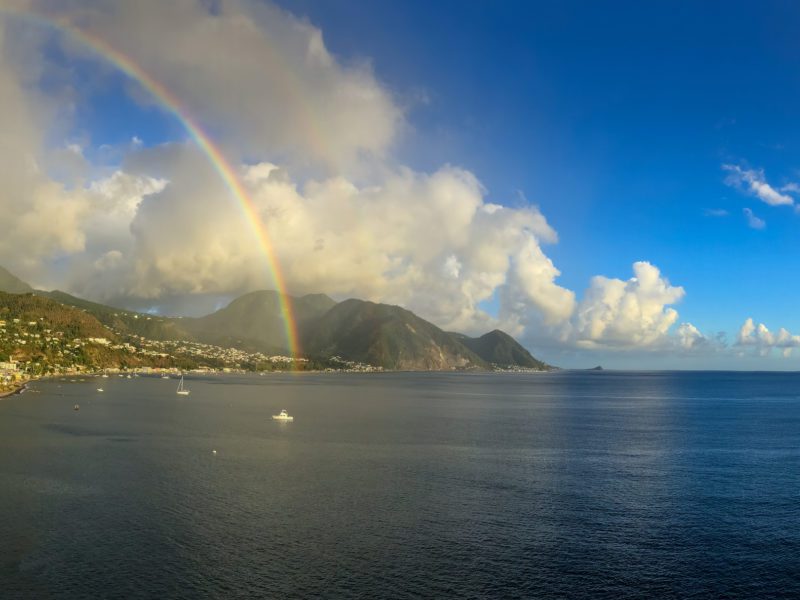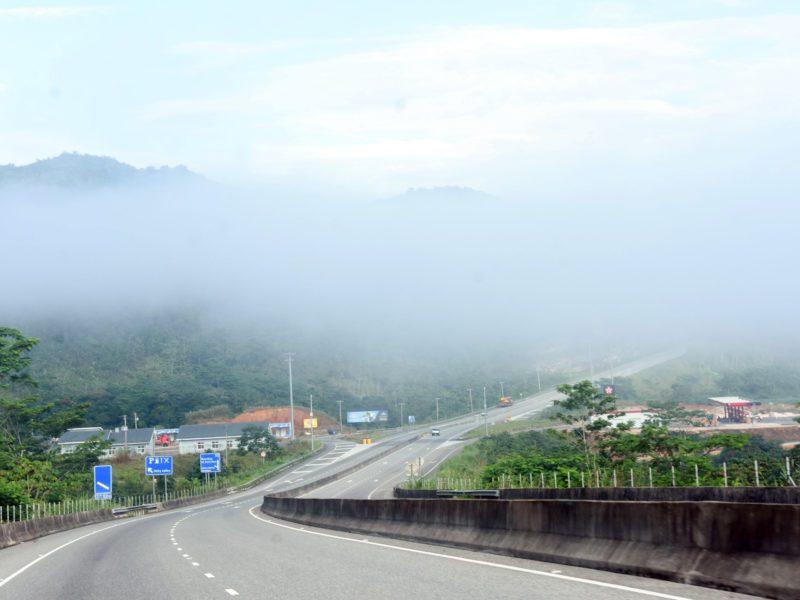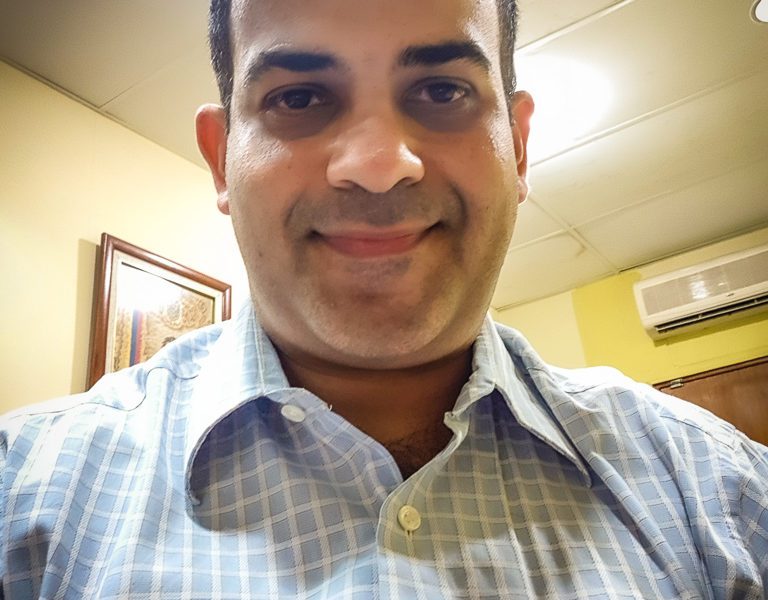The PetroCaribe accord offered Haiti a unique chance to turn around economically.
“It was a Bonanza!”
– Kesner Pharrell, leading Haitian Economist. CIJN Interview
Summary
Decades of violent political rivalries and instability, devastating natural disasters, and a dependence on external aid held hostage the island’s capacity to grow. In the past thirty years, there have been over thirty governments. Natural disasters have wiped out its agricultural sector. It remains dangerously underdeveloped. The overthrow of the thirty-year long Duvalier Dictatorship in 1987 was to usher in Democracy and lift its population out of entrenched poverty. The country was unprepared then, and today remains incapable of harnessing a fledging economy.
The country’s GDP has undergone extreme fluctuations, plummeting to its lowest level ever -11.9% in 1994 in a country where 70% of the population lives in abject poverty. It is largely dependent on international creditors and donors who control the purse strings of development aid, mistrustful of corrupt government instituttions. Local production is minimal. Haiti once produced 89% of its national consumption, today it relies on imports, 89%. And it is heavily in debt. In 2008, it’s ecomomic outlook was bleak. A debt of US2 billion, 0.4 GDP.
Petrocaribe was to provide the tools to generate instant State revenues, finance development initiatives, especially in the energy secteur, balance fiscal policy and social modernization for the long-term.
It was a political gamble as well. PetroCaribe enlarged Venezuela’s sphere of influence in the Western Hemisphere. Joining it meant defying the will of the United States, and its oil companies, fiercely opposed to it. It took two years for Haiti to sign the agreement with PetroCaribe.
A combination of unforeseen events, the 2008 devastating hurricanes and the the 2010 earrthquake, eventually led to the co-existence of PetroCaribe, the U.S. and the international community. It was a win-win for Haiti.
But Haiti failed to capitalize on the once-in-a-lifetime chance to change its course from chronic underdevelopment to a modern Haiti.
“Haiti missed an enormous opportunity.”
Fritz Jean, former Governor, Central Bank of Haiti.
Interview for MIC, October 2019
It’s institutions lacked the maturity to harness and manage resources, fiscal policy, control corruption and steer the huge and long-running profits from PetroCaribe toward sustainable development. It failed to forecast and plan for the future. It’s failure is reflected in the political and economic instability today.
Haiti is bankrupt, has tremendous debt and has lost all credibility. Without PetroCaribe, It cannot afford to purchase oil products at international prices and is suffering oil shortages that have triggered months-long civil unrest, paralyzing all sectors of the economy. GDP is teetering at 0.4% and inflation is soaring nearing 20%. (source: Banque Nationale d’Haiti,, Groupe Croissance 2019)
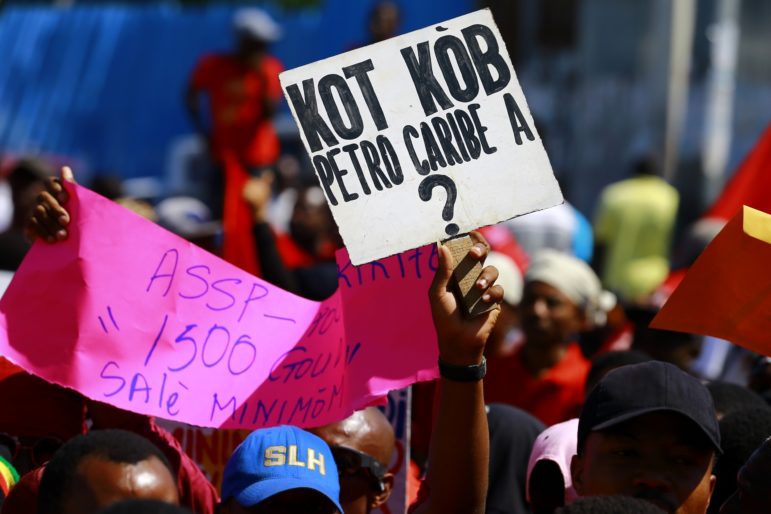
PetroCaribe Haiti Snapshot: 2008 – 2018
Table 1
| 2008 – 2018 43,9 Million barrels | Long-term Financing | Amount Upfront | Total |
|---|---|---|---|
| Fuel | $2,252,974,036 | $1,969,071,812 | $4,222,045,848 |
| Asphalt | $1,951,056 | $3,318,581 | $5,089,638 |
| Diesel | $3,871,590 | $6,591,711 | $10,463,301 |
| Total Energy Resources Generated | $2,258,796,683 | $1,978,082,105 | $4,237,598,789 |
Source: Haitian Bureau of Monetisation (BMPAD) corroborated by PDVSA shipment invoices
The PetroCaribe Accord
- August 29 2006: Haiti and Venezuela sign the accord to provide 14,000 barrels/day.
- March 5 2008: First shipment
- April 14, 2018: Last shipment
- Total: 43,9 million barrels from 2008 – 2018
Structure
- PETROCARIBE
- PDV CARIBE Mixed Enterprises – Subsidiary of PDVSA, responsible for the operational capacity of PetroCaribe, ensuring direct relation between supply and local enterprises. It also oversaw the creation of a logistical network of storage, transport, refining and distribution of fuels and byproducts.
Through PetroCaribe , Venezuela’s PDVSA provided the Haitian government oil products at preferential prices which it then resold to its oil suppliers at international prices. It would pay Venezuela a percentage upfront (30% to 40% depending on the price of the barrel) and the remainder over a 17 to 25-year repayment plan at 1% and 2% interest respectively with a two-year grace period.
It offered an unprecedented deal to provide oil for cheap and instant cash for cheap directly to the Haitian Government, bypassing the constraints required by International lenders and donors.
Through PDV CARIBE, a mixed enterprise was created to strengthen Haiti’s energy sector. The Societe d’Investissements PetionBolivar, S.A. was created in conjunction with EDH, the state’s Electricity company. Three electrical plants were built in Haiti. One provision was that Venezuela have its own technical teams to oversee operations. (see below.)
Impact 2008 – 2018
Experts and economists like Kesner Pharell say PetroCaribe’s impact on Haiti should be measured in terms of key events that critically affected it’s economy:
- 2008 – The global financial crisis and the start of PetroCaribe
- 2010 – A major earthquake destroys 60% of Haiti’s infrastructure
- 2011 — The rise in oil prices, a windfall for Haiti.
- 2015 — The oil price crash
- 2016 — The demise of PetroCaribe
2008 Global Financial Crisis
The global financial crisis paralyzed the country. Food and fuel prices soared causing widespread violent demonstrations that resulted in millions of dollars of damages to businesses. That same year, three back-to-back Category 5 hurricanes ravaged the island, causing $798 million in destroyed crops. It’s GDP plummeted to 0.8%. It’s debt totaled US$2 billion dollars.
But Haiti was given a chance to turn things around.
First, the World Bank and the International Monetary Fund, via a mechanism for poorest indebted countries, cut its debt in half, by US $1billion. Then came PetroCaribe.
PetroCaribe – First Impact: Budget Support
PetroCaribe dollars quickly accumulated in Haiti’s Central Bank and were put to immediate use by the Government, badly in need of cash to provide relief to the beleaguered nation.
The government passed a resolution to use US $ 198 million dollars from the PetroCaribe fund for emergency budget financing. (Source: IMF Executive Summary FY2008 and FY2009.)
PetroCaribe dollars would continue to support budget financing for the next eight years.
2010 Earthquake
A devastating earthquake struck in 2010, killing over 200,000 residents, destroying 60% of infrastructure, and leaving 1.5 million victims homeless. Estimated damages and losses reached more than USD One Billion dollars.
A second time around, Haiti stood to benefit.
PetroCaribe – Second Impact: Low Debt Servicing Costs, Captial Accumulation
“Following the earthquake, there were a set of circumstances very favorable to Haiti, government revenues keep climbing, and we can say it’s practically all PetroCaribe.”
– Kesner Pharrell intvw.
Kesner Pharell highlights several concurring financial mechanisms that were at play:
First, PETROCARIBE shipments had started in 2008. But it wouldn’t start long-term debt payments until 2010.
Because of the earthquake’s impact, President Hugo Chavez cancelled US $ 395 million of its debt to Venezuela. Pharell underscores the immediate benefit provided by PetroCaribe, which reduced debt-servicing significantly while providing much needed immediate revenues to the Government from its oil sales.
Haiti owed over US$ 795 million to International Financial Institutions (IDB, IFAD IDA, IMF, WB). Led by the U.S. Treasury, International Financial Institutions and other donors reached an agreement that eliminated the entirety of Haiti’s pre-earthquake debt obligations. (source U.S. Department of Treasury, 2010.)
Third, International donors pledged over US$ 11 billion dollars over a ten year period for Haiti’s reconstruction and humanitarian relief. (These pledges were controlled by the international organizations, not the Haitian Government, requiring cumbersome, lengthy mechanisms before they could or would be disbursed.)
PetroCaribe – Third Impact: Currency Stability and a Revenue Windfall for Haiti.
The price of oil skyrocketed to more than $100/barrel on the international markets. That reduced Haiti’s upfront payments to Venezuela to 30%, and enabled 70% to become long term debt. This provided a huge inflow of revenue in a short period.
A period of stability followed from 2011-2014. Haiti bounced back overnight bringing its GDP from (negative) -5.5% to 5.5% in 2011. Government revenues kept climbing, the local currency, the Gourdes remained stable, budget financing increased.
Kesner Pharrell underscores this period as one of the most significant in terms of potential for Haiti to capitalize on Petrocaribe’s favorable terms:
“During the whole Petrocaribe period, after the earthquake and the funds we obtained from international organizations, the inflation rate was inferior to 10%.
So in effect PetroCaribe stabilized the currency.”
Post PetroCaribe 2016 – 2018
2015 saw the start of oil prices plunge overnight from $100/barrel to approx $ US$40/barrel. Haiti’s currency dropped vertiginously, doubling in a year. Inflation soared. Food prices increased.
In 2016, Venezuela’s political crisis led to the unofficial demise of PetroCaribe.
The government had spent all the advanced cash from its longterm deal and missed the opportunity to capitalize on the PetroCaribe dollars to bolster the economy.
PetroCaribe: Use and Misuse of PetroCaribe Funds
Table 2
Use of PetroCaribe Financial Resources 2008 – 2016
| Funds allocated to development projects | $1,738,691,909 |
| Financing Budget of Bureau de Monetisation BMPAD | $20,485,789 |
| Financing Electric Power Plants (debt owed by EDH and SOGENER) | $612,161,711 |
| Repayment long-term debt | $21,882,502 |
| TOTAL USE of PC Resources | $2,393,221,913 |
From 2008 to 2016, the Haitian government, through three successive administrations, embarked on a spending-spree using PetroCaribe funds accruing exponentially to finance development projects, as was part of the PetroCaribe accord.
Overall Budgeting Structure
Former Prime Minister Evans Paul served from Jan 2015 to February 2016 under the current President Jovenel Moise. In an interview with MIC [Oct. 25, 2019] , Paul described the initial phases of PetroCaribe funds:
“PetroCaribe Funds were handled under two forms of management.”
The first, under President Preval’s administration (he signed the Petrocaribe accord in 2007) PetroCaribe dollars went into a special fund that was not budgeted. These are difficult to track.”
The second began in 2010 or 2011 when Petrocaribe dollars were officially included in the budget. A set of complicated steps was put in place requiring resolutions being passed before funds were released for a project.”
Under the resolutions, PetroCaribe dollars were pre-allocated to Ministries based on “block” estimates for their projects. These were in turn disbursed by the independent Government entity, BMPAD, Bureau of Monetisation, created specifically to funnel PetroCaribe dollars.
Paul notes “there was a lack of vision, no management strategy. Plans changed from administration to administration. Projects were allocated without considering choices of where priorities were.”
In 2018 the Haitian Supreme Court launched a full audit. It released a first partial report in Jan 2019. A second report was released May 31, 2019 covering 75% of all the PetroCarbe Funds spent.
The PetroCaribe Audit
US$ 1, 738,691, 909 were earmarked for over 420 projects, of which US$ 1, 605,905, 287 were disbursed (92% of the entire budget for projects).
The Supreme Court’s investigations concluded that nearly all the projects failed to meet required bidding processes, lacked financial proof of expenses, oversight and follow-up. There was double-billing for the same project and at times, ghost companies. There were dubious expenses for over bloated-administrative costs that included salaries for close friends, personal expenses and offices, 14th month yearly bonuses and petty cash.
*( the IMF and WB have acknowledged in their reports the lack of transparency on the government’s part to provide documentation and figures.)
Snapshot of Projects: The few examples below illustrate the discrepancies found in most of the 420 projects.
Project: Rehabilitation of streets in Cap Haitian Phase 1:
2010 Approved costL US$ 7.4 million
2012 Additional contract: US$ 1 million
Project: Rehabilitation of streets of Cap Haitian Phase 2
2012 Approved cost: US$ 4.5 million
Project: Rehabilitation of streets of Cap Haitian and surroundings
2013 Approved cost: US$ 2.5 million
The Court states all three projects were US$ 7.2 million above the original approved cost.
Project: Construction of silos for food security:
- 2012 Approved cost: US$ $ 4 Million
- 2015 Three more contracts for additional work: US $ 6.5 million
- Final cost: US$ 11.5 million paid 100%
- The three additional contracts were listed in Gourdes
- total: Gdes 216 million or US$ 3.6 million
- (2015 exch rate Gdes 60 = US$1)
- Actual final cost: US$ 7.6 million
- A discrepancy of US$ 3.9 million exists between what was paid and actual costs that is not reflected in the audit.
Project: Electricity nationwide with solar lamp posts:
- Cost US$ 13, 780,000
- Half the solar lamp posts were installed while the full cost was paid nearly 100% upfront to two firms. The contract was expanded to included 20 firms, causing additional costs.
But the Supreme Court Audit is not complete. The Court said it is still waiting for documents it has requested, but not received. As of now, it cannot provide a figure on how many PetroCaribe dollars were misspent or are unaccounted for.
Additional Unresolved Expenditures:
PVB CARIBE MIXED-ENTERPRISE: ENERGY BUILDING.
–A case of “CONFUSING CONDITIONS” on use of PETROCARIBE FUNDS
These involve the mixed-enterprise Venezuelan-Haitian cooperation agreement. “There were cooperation agreements for which there has not been a complete evaluation” says Evans Paul in an interview with MIC, October 27, 2019. “Important sums of money were involved in these cooperation agreements. That’s an aspect that needs to be looked at serious.”
Paul says approximately 23% of the expenditures remain to be audited and provides the following examples:
“There were a lot of funds in contracts involving Dominican companies under confusing conditions.”
The PVB CARIBE agreement (see description above), PetroCaribe’s operational arm, called for Venezuelan supervision.
“These were contracts with Haiti’s State Electrical Company, EDH. Venezuela wanted to run the projects and used funds to pay for Cuban technicians. Also for Venezuelan technicians. Funds also went to Sogener (Haiti’s buyer). Sogener owed considerable amounts to the State. Those transactions were never clear.” Funds were also used to pay off EDH’s debt.
According to the Supreme Court’s audit, over US$ 612 million were used to pay off the debts of the private company Sogener and the State company, EDH. (See Table 2). Here again, there is the confusing situation where Sogener owed the State, and EDH owed the company. (To be clarified)
Conclusion: PetroCaribe’s Impact
MISSED OPPORTUNITY:
PETROCARIBE provided the GOH’s brief economic recovery, currency stabilization and budget financing. The immediate profits from its long-term loan should have encouraged the Haitian Government to plan strategically ahead, invest in infrastructure, social development and build reserves.
The former governor of Haiti’s Central Bank, Fritz Jean, in an interview with MIC puts it bluntly:
“It was a missed opportunity for Haiti. The volume of [PetroCaribe] transactions totaled US $ 4.5 billion. The debt was one part of it, about US $ 2.1. billion. There was tremendous waste. The monies are in tax-havens. We could have used this financing, about US $ 2 Billion, to double or triple the value through investments.
It was an orgy of corruption.”
Haiti is Bankrupt
HAITI is back to where it was in 2008. It is heavily in debt, over USD 2 billion, 85% for PDVSA alone.
GNP for 2019 is 0.4% and predicted to go into negative figures, according to Haitian leading economist Kesner Pharrel.
And it is worse off than it was in 2008, when PetroCaribe came into the picture. Having more money, says Pharrel does not mean economic growth.
“If we look at the real economy, we don’t see the slightest impact from PetroCaribe in terms of economic growth and exploitation of GDP, the results speak for themselves. There is no production, no public investment, serious investment that shows good performance.”
Today, the U.S.Company Novum is Haiti’s principal oil supplier. Haiti is now having to buy oil at international prices.
As of March 2019, Haiti owed Novum US$ 39 million. Last April a Novum tanker sat offshore for a month waiting for payment to deliver the oil local companies had ordered. Novum added $20,000/day holding charges while it awaited payment. An additional minumum of $ 600,000. And the Government owed its local companies over US $ 54,000 which it could not even pay.
To meet its bill, Haiti tried to raise the cost of gas the pump. That triggered widespread protests. causing hundreds of thousand of dollars in damages to businesses. Within two days, it cancelled the price increase.
The tanker left, headed to Jamaica to sell its shipment.
But the ensuing oil shortage caused another round of violent protests.
Compounding the problem, Haiti has been subsidizing oil at the pump. This is has been a decades long “policy” to avoid social unrest. The government makes up the difference plus taxes. It is an intractable situation.
It’s not just economic factors, warns Pharell, one must also reckon with political instability. Today, Haiti is in the throes of some of the worst political turmoil in its history.
